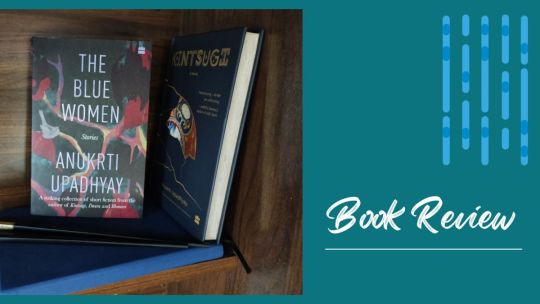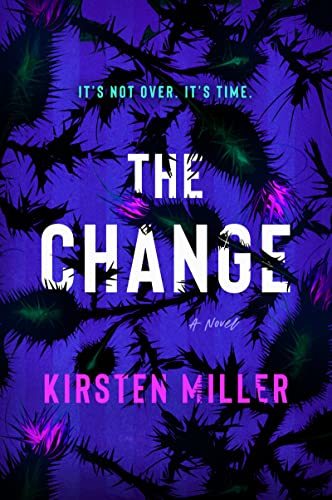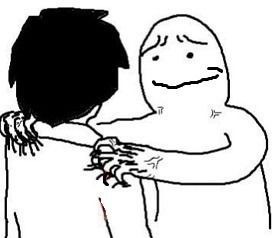#women fiction
Text
X female Reader stories especially. I am the main character!!!!

#fanfiction#fanfic#fan fiction#literature#main character#x reader#reader#women literature#fiction#women fiction
6 notes
·
View notes
Link
Title: Precious Gift
Precious Gift – Danielle Steel’s novel will take you on a journey of Love, Hope, new relationships, and the power to achieve dreams.
0 notes
Text



CALLING ALL ARC READERS! Are you ready to dive into a thrilling journey of crime fiction, social commentary, and a touch of romance? If your answer was "YES," then E.J. Post's debut novel, "Hiding Places," is the right read for you. If you're passionate about unraveling mysteries and sharing your insights, drop a in the comments and click here to apply as an ARC reader!
#bookblr#book blog#books and literature#indie publishing#booklover#indie author#books#books and reading#bookworm#reading#book aesthetic#indie books#crime thriller#crime fiction#reading community#book recommendations#arc readers#arc copy#women fiction
1 note
·
View note
Text
You can’t win as a woman in fiction. Be too positive, you become a Mary Sue, have flaws and those flaws are why almost nobody likes you. Be moderate, you have wet-cabbage personality, be exuberant, you are an unrealistic example. Have strong morals, and you’re badly developed, be morally corrupt and you’re hated with such vigour fans will send hate mail to the actress who plays the character. Be kind and soft and in love, you’re a representation of sexism, be cruel, harsh and cold and you’re just a bitch. Be a complex, realistic, ambiguous character, and either your flaws or your positive traits will be ignored or blown out of proportion and into oblivion. There is no winning for female characters.
#women in fiction#alicent hightower#rhaenyra targaryen#daenerys targaryen#sansa stark#arya stark#catelyn tully#padme amidala#assaj ventress#ahsoka tano#leia organa#leia skywalker#princess leia#polly gray#ada shelby#katniss everdeen#elizabeth bennet#elena gilbert#women#female characters#women in film
7K notes
·
View notes
Text

all RIGHT:
Why You're Writing Medieval (and Medieval-Coded) Women Wrong: A RANT
(Or, For the Love of God, People, Stop Pretending Victorian Style Gender Roles Applied to All of History)
This is a problem I see alllll over the place - I'll be reading a medieval-coded book and the women will be told they aren't allowed to fight or learn or work, that they are only supposed to get married, keep house and have babies, &c &c.
If I point this out ppl will be like "yes but there was misogyny back then! women were treated terribly!" and OK. Stop right there.
By & large, what we as a culture think of as misogyny & patriarchy is the expression prevalent in Victorian times - not medieval. (And NO, this is not me blaming Victorians for their theme park version of "medieval history". This is me blaming 21st century people for being ignorant & refusing to do their homework).
Yes, there was misogyny in medieval times, but 1) in many ways it was actually markedly less severe than Victorian misogyny, tyvm - and 2) it was of a quite different type. (Disclaimer: I am speaking specifically of Frankish, Western European medieval women rather than those in other parts of the world. This applies to a lesser extent in Byzantium and I am still learning about women in the medieval Islamic world.)
So, here are the 2 vital things to remember about women when writing medieval or medieval-coded societies
FIRST. Where in Victorian times the primary axes of prejudice were gender and race - so that a male labourer had more rights than a female of the higher classes, and a middle class white man would be treated with more respect than an African or Indian dignitary - In medieval times, the primary axis of prejudice was, overwhelmingly, class. Thus, Frankish crusader knights arguably felt more solidarity with their Muslim opponents of knightly status, than they did their own peasants. Faith and age were also medieval axes of prejudice - children and young people were exploited ruthlessly, sent into war or marriage at 15 (boys) or 12 (girls). Gender was less important.
What this meant was that a medieval woman could expect - indeed demand - to be treated more or less the same way the men of her class were. Where no ancient legal obstacle existed, such as Salic law, a king's daughter could and did expect to rule, even after marriage.
Women of the knightly class could & did arm & fight - something that required a MASSIVE outlay of money, which was obviously at their discretion & disposal. See: Sichelgaita, Isabel de Conches, the unnamed women fighting in armour as knights during the Third Crusade, as recorded by Muslim chroniclers.
Tolkien's Eowyn is a great example of this medieval attitude to class trumping race: complaining that she's being told not to fight, she stresses her class: "I am of the house of Eorl & not a serving woman". She claims her rights, not as a woman, but as a member of the warrior class and the ruling family. Similarly in Renaissance Venice a doge protested the practice which saw 80% of noble women locked into convents for life: if these had been men they would have been "born to command & govern the world". Their class ought to have exempted them from discrimination on the basis of sex.
So, tip #1 for writing medieval women: remember that their class always outweighed their gender. They might be subordinate to the men within their own class, but not to those below.
SECOND. Whereas Victorians saw women's highest calling as marriage & children - the "angel in the house" ennobling & improving their men on a spiritual but rarely practical level - Medievals by contrast prized virginity/celibacy above marriage, seeing it as a way for women to transcend their sex. Often as nuns, saints, mystics; sometimes as warriors, queens, & ladies; always as businesswomen & merchants, women could & did forge their own paths in life
When Elizabeth I claimed to have "the heart & stomach of a king" & adopted the persona of the virgin queen, this was the norm she appealed to. Women could do things; they just had to prove they were Not Like Other Girls. By Elizabeth's time things were already changing: it was the Reformation that switched the ideal to marriage, & the Enlightenment that divorced femininity from reason, aggression & public life.
For more on this topic, read Katherine Hager's article "Endowed With Manly Courage: Medieval Perceptions of Women in Combat" on women who transcended gender to occupy a liminal space as warrior/virgin/saint.
So, tip #2: remember that for medieval women, wife and mother wasn't the ideal, virgin saint was the ideal. By proving yourself "not like other girls" you could gain significant autonomy & freedom.
Finally a bonus tip: if writing about medieval women, be sure to read writing on women's issues from the time so as to understand the terms in which these women spoke about & defended their ambitions. Start with Christine de Pisan.
I learned all this doing the reading for WATCHERS OF OUTREMER, my series of historical fantasy novels set in the medieval crusader states, which were dominated by strong medieval women! Book 5, THE HOUSE OF MOURNING (forthcoming 2023) will focus, to a greater extent than any other novel I've ever yet read or written, on the experience of women during the crusades - as warriors, captives, and political leaders. I can't wait to share it with you all!
#watchers of outremer#medieval history#the lady of kingdoms#the house of mourning#writing#writing fantasy#female characters#medieval women#eowyn#the lord of the rings#lotr#history#historical fiction#fantasy#writing tip#writing advice
29K notes
·
View notes
Text
ngl, I'm beginning to take issue with how in conversations about anti-intellectualism almost automatically, the face of girls and women will be slapped on the problem.
#'all those tiktok girls who only like marvel films and' - why do you always say girls and women? are the guys filling opera halls instead?#'women in their mid 20s who still only read YA novels' okay sure that's an example and relevant discussions can be had#but it reminds me of the mocking tone in which people speak of 'chick-lit' to use women's interest as an indicator of lower value#while in fact women are reading more than men in EVERY single genre of fiction. Women are doing a lot of (often unpaid) labour#supporting libaries supporting theatres supporting cultural events#meanwhile there is a pretty big overlap between toxic masculinity and anti-intellectualism#(especially misogyny and homophobia)#especially when it comes to things like ballet or opera or musical or generally dance#in fact it is often the female investment in specific things that makes them less 'valuable' in general consciousness#for thousands of years the theatre was well-respected and a high form of art - and now it's a 'wife-thing'#the father who will teach his son that theatre and dance are for girls - how is that never an example for anti-intellectualism
16K notes
·
View notes
Text
..and I got off into the cool corridors of the university, its stifling modern basements, here and there a giant window through which the world looks far more tempting than it really is, a world in a display window, up for sale, and I feel like stopping the rapid footsteps around me and saying, what are you running for, believe me, there’s nowhere to hurry to, I’ve just come from there, from that real, glittering, expensive world, and nothing there is what it seems, everything’s rotten, believe me, there aren’t as many worms in the cemetery as there are in the most beautiful streets in that world.
#book quotes#citation#novels#women's wrongs#contemporary literature#romance#love#beautiful prose#asian literature#israel#women fiction#love life
0 notes
Text
The Blue Women - Stories by Anukrti Upadhyay | Book Review
The Blue Women by Anukrti Upadhyay
261 pages
Harper Collins Fourth Estate
‘The Blue Women’ by Anukrti Upadhyay is magical, emotional, and gratifying with stories woven across an unpretentious literary tapestry. The writing flows seamlessly from one story to the next. You meet characters, women who are real and flawed and hence, interesting!
The twelve short stories in this book are…

View On WordPress
0 notes
Text

The game's name is lesbianism and I'm loosing.
#I love when fictional women are enemies with homoerotiic relatioship#adventure time#atimers#fionna and cake#fionna and cake spoilerz#marceline abadeer#marceline the vampire queen#bonnibel bubblegum#princess bubblegum#bubbline#fan art
3K notes
·
View notes
Text

Underrated sapphic media? Fried Green Tomatoes is first on my list
#fried green tomatoes#fried green tomatoes at the whistle stop cafe#idgie threadgoode#sapphic#lgbt romance#wlw#fanart#digital art#my art#art#Idgie Threadgoode is the woman of my dreams#I’m not at all kidding#may be one of the hottest women I’ve seen in my entire life#if only she wasn’t a fictional character#and also soulmates with ruth
2K notes
·
View notes
Text




#critteredit#criticalroleedit#yasha nydoorin#imogen temult#the stormlord#ashley johnson#laura bailey#matthew mercer#critical role#c2#c3#~#cr spoilers#critical role has the best women in fiction actually#the stormlord is my fav sapphic ally#1k
2K notes
·
View notes
Text

in hills made of coarse earth and honey🏺
✦ find me on instagram @the.flightless.artist ✦
#art#illustration#digital art#drawing#digital illustration#procreate app#digital drawing#digital artist#procreate art#ipad pro#ancient greece#ancient greek art#historical illustration#historical aesthetic#historic fiction#greek aesthetic#oh to be them#greek women#women in art#female friendship
622 notes
·
View notes
Text
The Change by Kirsten Miller
The Change by Kirsten Miller
In the Long Island oceanfront community of Mattauk, three different women discover that midlife changes bring a whole new type of empowerment…After Nessa James’s husband dies and her twin daughters leave for college, she’s left all alone in a trim white house not far from the ocean. In the quiet of her late forties, the former nurse begins to hear voices. It doesn’t take long for Nessa to realize…

View On WordPress
#book#Book Review#Contemporary#Fiction#Friendship#Kirsten Miller#magic#Magical Realism#Mystery#mystery thriller#NetGalley#The Change#Thriller#women#Women fiction#Women&039;s Friendship Fiction
0 notes
Text
So here's one of the coolest things that has happened to me as a Tolkien nut and an amateur medievalist. It's also impacted my view of the way Tolkien writes women.
Here's Carl Stephenson in MEDIEVAL FEUDALISM, explaining the roots of the ceremony of knighthood:
"In the second century after Christ the Roman historian Tacitus wrote an essay which he called Germania, and which has remained justly famous. He declares that the Germans, though divided into numerous tribes, constitute a single people characterised by common traits and a common mode of life. The typical German is a warrior. [...] Except when armed, they perform no business, either private or public. But it is not their custom that any one should assume arms without the formal approval of the tribe. Before the assembly the youth receives a shield and spear from his father, some other relative, or one of the chief men, and this gift corresponds to the toga virilis among the Romans--making him a citizen rather than a member of a household" (pp 2-3).
Got it?
Remember how Tolkien was a medievalist who based his Rohirrim on Anglo-Saxon England, which came from those Germanic tribes Tacitus was talking about?
Stephenson argues that the customs described by Tacitus continued into the early middle ages eventually giving rise to the medieval feudal system. One of these customs was the gift of arms, which transformed into the ceremony of knighthood:
"Tacitus, it will be remembered, describes the ancient German custom by which a youth was presented with a shield and a spear to mark his attainment of man's estate. What seems to the be same ceremony reappears under the Carolingians. In 791, we are told, Charlemagne caused Prince Louis to be girded with a sword in celebration of his adolescence; and forty-seven years later Louis in turn decorated his fifteen-year-old son Charles "with the arms of manhood, i.e., a sword." Here, obviously, we may see the origin of the later adoubement, which long remained a formal investiture with arms, or with some one of them as a symbol. Thus the Bayeux Tapestry represents the knighting of Earl Harold by William of Normandy under the legend: Hic Willelmus dedit Haroldo arma (Here William gave arms to Harold). [...] Scores of other examples are to be found in the French chronicles and chansons de geste, which, despite much variation of detail, agree on the essentials. And whatever the derivation of the words, the English expression "dubbing to knighthood" must have been closely related to the French adoubement" (pp 47-48.)
In its simplest form, according to Stephenson, the ceremony of knighthood included "at most the presentation of a sword, a few words of admonition, and the accolade."
OK. So what does this have to do with Tolkien and his women? AHAHAHAHA I AM SO GLAD YOU ASKED. First of all, let's agree that Tolkien, a medievalist, undoubtedly was aware of all the above. Second, turn with me in your copy of The Lord of the Rings to chapter 6 of The Two Towers, "The King of the Golden Hall", when Theoden and his councillors agree that Eowyn should lead the people while the men are away at war. (This, of course, was something that medieval noblewomen regularly did: one small example is an 1178 letter from a Hospitaller knight serving in the Latin kingdom of Jerusalem which records that before marching out to the battle of Montgisard, "We put the defence of the Tower of David and the whole city in the hands of our women".) But in The Lord of the Rings, there's a little ceremony.
"'Let her be as lord to the Eorlingas, while we are gone.'
'It shall be so,' said Theoden. 'Let the heralds announce to the folk that the Lady Eowyn will lead them!'
Then the king sat upon a seat before his doors and Eowyn knelt before him and received from him a sword and a fair corselet."
I YELLED when I realised what I was reading right there. You see, the king doesn't just have the heralds announce that Eowyn is in charge. He gives her weapons.
Theoden makes Eowyn a knight of the Riddermark.
Not only that, but I think this is a huge deal for several reasons. That is, Tolkien knew what he was doing here.
From my reading in medieval history, I'm aware of women choosing to fight and bear arms, as well as becoming military leaders while the men are away at some war or as prisoners. What I haven't seen is women actually receiving knighthood. Anyone could fight as a knight if they could afford the (very pricy) horse and armour, and anyone could lead a nation as long as they were accepted by the leaders. But you just don't see women getting knighted like this.
Tolkien therefore chose to write a medieval-coded society, Rohan, where women arguably had greater equality with men than they did in actual medieval societies.
I think that should tell us something about who Tolkien was as a person and how he viewed women - perhaps he didn't write them with equal parity to men (there are undeniably more prominent male characters in The Lord of the Rings and The Hobbit, at least, than female) but compared to the medieval societies that were his life's work, and arguably even compared to the society he lived in, he was remarkably egalitarian.
I think it should also tell us something about the craft of writing fantasy.
No, you don't have to include gut wrenching misogyny and violence against women in order to write "realistic" medieval-inspired fantasy.
Tolkien's fantasy worlds are DEEPLY informed by medieval history to an extent most laypeople will never fully appreciate. The attitudes, the language, the ABSOLUTELY FLAWLESS use of medieval military tactics...heck, even just the way that people travel long distances on foot...all of it is brilliantly medieval.
The fact that Theoden bestows arms on Eowyn is just one tiny detail that is deeply rooted in medieval history. Even though he's giving those arms to a woman in a fantasy land full of elves and hobbits and wizards, it's still a wonderfully historically accurate detail.
Of course, I've ranted before about how misogyny and sexism wasn't actually as bad in medieval times as a lot of people today think. But from the way SOME fantasy authors talk, you'd think that historical accuracy will disappear in a puff of smoke if every woman in the dragon-infested fantasy land isn't being traumatised on the regular.
Tolkien did better. Be like Tolkien.
#tolkien#middle earth#jrr tolkien#lord of the rings#lotr#the lord of the rings#eowyn#writing fantasy#fantasy#female characters#writing#historical fiction#medieval women#medieval history#medieval#history#womens history
8K notes
·
View notes
Text
seeing canon x canon art with your f/o in it and it’s really really cute and well done but it makes you so jealous you want to turn radioactive

#i really love the women he is shipped with i do. i do not hate them and i never could nor do i hate the ships themselves i’m just so jealou#when it’s him shipped with men i actually like seeing it cus i’m super insecure about being a gay guy in love w him lol#i just imagine him with my oc so much it makes me OooOiOioiOuiOiOuuoio#UGH.#UGH. UGH. UGH. UGH. YUGH. UGHHH. UGH.#self shipping#self ship#f/o community#self ship community#f/o#shipping#fictional other#selfship
738 notes
·
View notes
Text
It All Comes Down To This
It All Comes Down To This
This is my first time reading work from NYT and USA Today bestselling author, Terese Fowler. I like the title, the cover, and the story. The novel is classified under Literary Fiction/Women’s Fiction; however, I think most people that pick up this book would enjoy it. This novel is the perfect beach/porch read. It’s big-hearted and enjoyable.
This book is about sisterhood, family, dreams,…

View On WordPress
0 notes